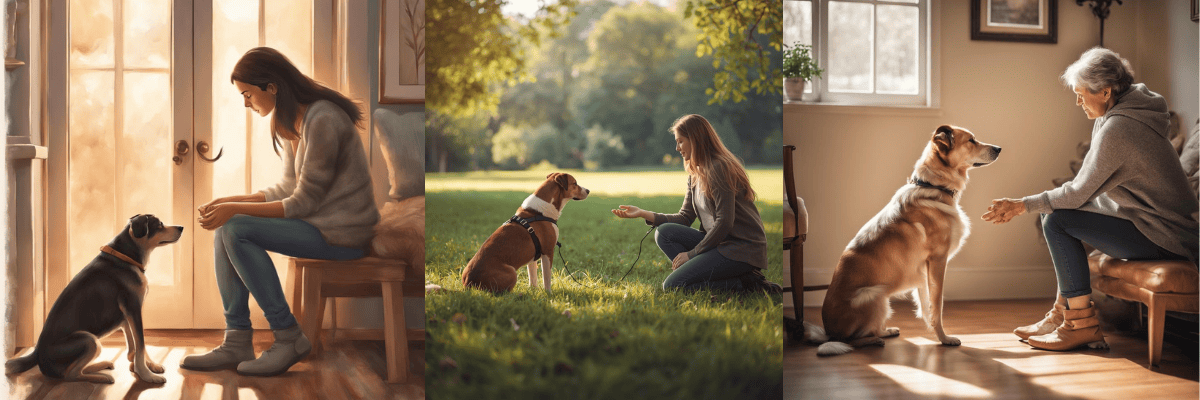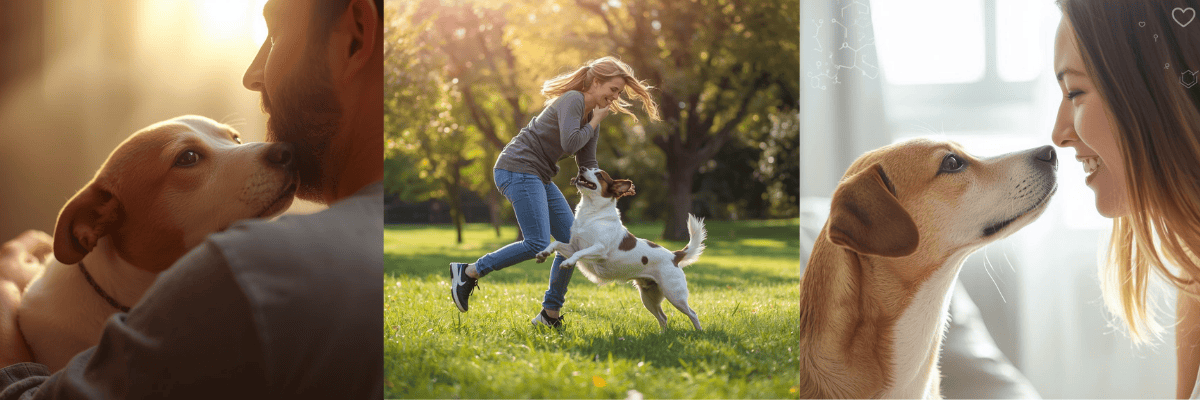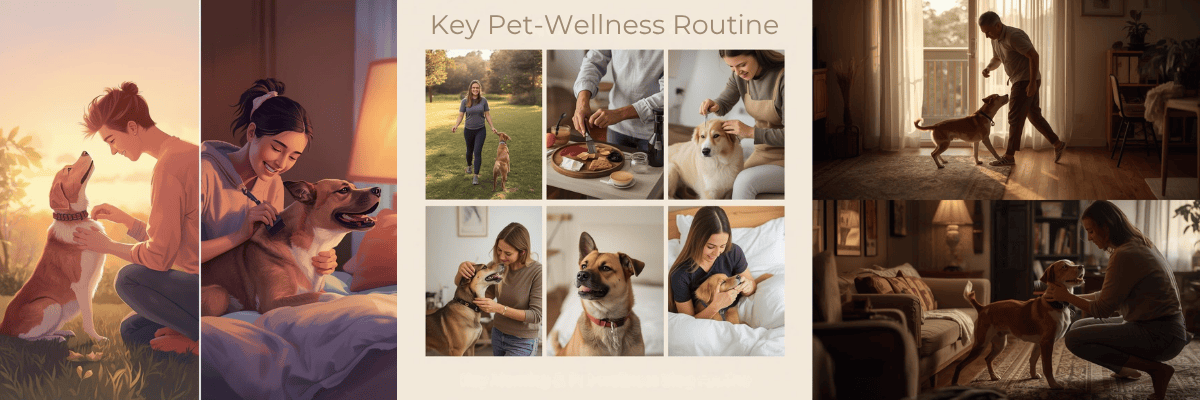Introduction
Welcoming a rescue dog into your home is a deeply rewarding experience, but it often comes with unique challenges. Many rescue dogs carry the weight of past trauma, neglect, or abandonment, which can make trust a delicate and gradual process. Unlike puppies or dogs raised in stable environments, rescue dogs may be wary of new people, places, or routines.
Building trust with a rescue dog is not just about teaching commands or correcting behavior—it’s about creating a safe, consistent, and compassionate environment where your dog feels secure. Every positive interaction, from gentle petting to playtime, helps your dog learn that they can rely on you. With patience, understanding, and consistent care, you can transform fear or anxiety into confidence, forming a strong, lasting bond.
In this post, we’ll guide you through practical strategies and step-by-step tips to help your rescue dog feel safe, valued, and loved. By following these methods, you’ll be able to develop trust, foster emotional connection, and create a harmonious, lifelong relationship with your furry companion.
1. Create a Safe and Calm Environment
The foundation of trust begins with a sense of safety. Rescue dogs may have experienced fear, neglect, or sudden changes in their past, so providing a calm, secure environment is essential. When a dog feels safe, they are more likely to explore, learn, and respond positively to your interactions.

Tips for Creating a Safe Space:
- Designate a Quiet Area: Choose a room or corner in your home where your dog can retreat to relax. A crate, bed, or soft blanket can give them a sense of ownership over this space.
- Provide Comfort Items: Include familiar toys, chew items, or blankets. If your dog came with an item from the shelter or foster home, keep it nearby to provide reassurance.
- Minimize Stressors: Reduce loud noises, sudden movements, or high-traffic areas that might overwhelm your dog. Calm music or white noise can sometimes help soothe anxious pets.
- Use Safe Scents: Dogs respond to scent cues, so familiar smells—like your clothing or bedding—can provide comfort and reassurance.
Bonding Benefits:
Creating a secure environment allows your dog to feel in control and safe, which is the first step in building trust. When they know there is a space where they won’t be threatened, they are more likely to approach you voluntarily, engage in positive interactions, and gradually open up emotionally.
2. Give Them Time to Adjust
Adjusting to a new home can be overwhelming for a rescue dog. They may have experienced abandonment, trauma, or inconsistent care, which can make them cautious or fearful in unfamiliar surroundings. Patience is key—rushing interactions or expecting immediate affection can set back progress.

Tips for Helping Your Dog Adjust:
- Allow Exploration at Their Own Pace: Let your dog roam and investigate their new environment gradually. Don’t force them into areas or situations they seem uncomfortable with.
- Limit Visitors and Noise: Minimize exposure to strangers, loud noises, or sudden changes in the home. This creates a calm atmosphere where your dog can feel safe.
- Observe Body Language: Pay attention to signs of stress, such as cowering, tucked tail, or avoidance. Respect their signals and give them space when needed.
- Encourage Voluntary Interaction: Allow your dog to approach you on their own terms. Offer treats, gentle praise, or calm presence rather than insisting on immediate physical contact.
Bonding Benefits:
By giving your dog the time and space to adjust, you demonstrate respect for their emotional boundaries. This patience fosters trust, showing them that you will not force interactions and that your home is a safe place. Over time, a rescue dog who feels secure and unpressured will begin to approach you voluntarily, strengthening the foundation of your relationship.
3. Establish a Routine
Consistency is one of the most effective ways to help a rescue dog feel secure. A predictable routine gives your dog a sense of structure and control, reducing anxiety and uncertainty. Knowing what to expect from their day helps them trust that their needs will be met and that you are a reliable caregiver.
Tips for Creating a Routine:
- Consistent Feeding Schedule: Serve meals at the same times each day. Predictable mealtimes give your dog stability and reduce stress around food.
- Regular Walks and Bathroom Breaks: Keep a steady schedule for walks and potty breaks. Dogs thrive on knowing when these activities will occur.
- Structured Play and Training Sessions: Incorporate short, daily sessions of play or basic training to provide mental and physical stimulation while reinforcing good behavior.
- Predictable Commands and Rules: Use the same commands for basic cues like “sit,” “stay,” or “come,” and ensure everyone in the household follows the same rules.
Bonding Benefits:
A well-established routine communicates reliability. Your dog learns that you are dependable and that their needs will consistently be met. This predictability fosters trust and allows your dog to feel safe enough to relax, explore, and engage with you more freely.
4. Use Positive Reinforcement
Positive reinforcement is one of the most effective tools for building trust with a rescue dog. Instead of punishing undesirable behaviors, rewarding good behaviors encourages your dog to repeat them while strengthening your bond. This approach helps your dog associate you with safety, encouragement, and positive experiences.

Tips for Using Positive Reinforcement:
- Reward Desired Behaviors: Offer treats, verbal praise, or gentle petting when your dog follows commands, approaches you, or shows calm behavior.
- Celebrate Small Wins: Even minor progress, like taking a step closer to you or responding to your call, deserves recognition.
- Avoid Punishment: Scolding or physical corrections can increase fear, damage trust, and undo the progress you’ve made.
- Timing is Key: Reward your dog immediately after the desired behavior so they clearly understand the connection between the action and the reward.
Bonding Benefits:
Positive reinforcement fosters a sense of safety and encourages your dog to engage willingly. By associating you with rewards and comfort, your rescue dog will learn to approach you with confidence, making each interaction a step toward a deeper, trusting relationship.
5. Practice Gentle and Respectful Handling
Many rescue dogs have experienced neglect, trauma, or inconsistent care, which can make them sensitive to touch and handling. Practicing gentle and respectful handling is essential to help them feel safe and valued in your presence. Respecting their boundaries builds trust and encourages positive interactions.
Tips for Gentle Handling:
- Approach Slowly: Move calmly and avoid sudden movements that may startle your dog.
- Let Them Initiate Contact: Allow your dog to come to you rather than forcing physical interaction.
- Respect Personal Space: If your dog shows signs of discomfort—like tucking their tail, avoiding eye contact, or backing away—give them room and try again later.
- Use Calm and Soft Voice: Speak gently to reassure your dog during handling or grooming.
Bonding Benefits:
Respectful handling communicates to your dog that they are safe and that you honor their comfort levels. This encourages them to trust your presence, approach you voluntarily, and engage in more positive interactions over time. Consistent, gentle touch reinforces the message that you are a reliable and caring companion.
6. Spend Quality Time Together
Spending dedicated, quality time with your rescue dog is crucial for building trust and a strong emotional bond. Shared experiences help your dog associate you with safety, comfort, and positive interactions, which is essential for overcoming past trauma.
Tips for Spending Quality Time:
- Short Walks and Exploration: Gentle walks in familiar areas help your dog feel secure while providing mental stimulation and exercise.
- Interactive Play: Use toys, fetch, or tug games that allow you to engage together in a positive, controlled way.
- Quiet Presence: Sometimes, simply sitting nearby or allowing your dog to relax in your presence can be comforting, especially for anxious dogs.
- Positive Reinforcement During Interaction: Praise and treat your dog when they voluntarily engage with you, reinforcing trust.
Bonding Benefits:
Quality time fosters familiarity and emotional connection. Through consistent, positive interactions, your dog learns that you are a source of comfort and companionship. These moments of shared attention help them feel secure, confident, and more willing to trust you.
7. Be Patient and Consistent
Building trust with a rescue dog is a gradual process that requires patience and consistency. Progress may be slow, and setbacks can occur, but maintaining a steady approach reassures your dog that they can rely on you.
Tips for Patience and Consistency:
- Maintain Daily Routines: Keep feeding, walks, and play sessions at predictable times.
- Use Consistent Commands: Ensure everyone in the household uses the same cues for basic commands to avoid confusion.
- Stay Calm During Setbacks: If your dog reacts fearfully or shows anxiety, respond with calm reassurance rather than frustration.
- Celebrate Small Milestones: Recognize incremental improvements, such as your dog approaching you voluntarily or responding to a command, to reinforce positive behavior.
Bonding Benefits:
Consistency and patience show your rescue dog that you are dependable and trustworthy. Over time, they learn that they can safely rely on you, which strengthens emotional security and fosters a lasting, loving bond.
8. Seek Professional Help if Needed
Some rescue dogs may have severe anxiety, fear, or behavioral challenges that require specialized guidance. Consulting a professional trainer or behaviorist can provide tailored strategies to help your dog feel safe and confident.
Tips for Seeking Professional Help:
- Look for Positive Reinforcement Trainers: Choose professionals who use reward-based methods rather than punishment, as this aligns with trust-building.
- Consult a Veterinarian: Behavioral issues can sometimes have medical causes, so rule out health concerns first.
- Follow a Structured Plan: Work closely with the professional to implement consistent techniques at home.
- Be Involved in Training: Participate actively in sessions to strengthen the bond and reinforce learning.
Bonding Benefits:
Professional guidance ensures your dog receives appropriate support, helping them overcome fears more effectively and safely. By implementing expert strategies, you can accelerate trust-building and create a secure, positive environment for your rescue dog.
Conclusion
Building trust with a rescue dog is a journey that requires patience, empathy, and consistent care. Each dog’s past experiences are unique, and progress may take time, but the rewards are immeasurable. By creating a safe environment, giving them space to adjust, establishing routines, using positive reinforcement, handling them gently, spending quality time together, and maintaining patience and consistency, you lay a strong foundation for a lasting bond.
Remember to celebrate every small milestone, whether it’s a wagging tail, a successful recall, or a quiet moment of closeness. For dogs with more severe challenges, seeking professional guidance can ensure that progress is safe and effective.
Ultimately, building trust transforms your relationship, helping your rescue dog feel secure, valued, and loved. With dedication and compassion, you’ll cultivate a lifelong connection filled with loyalty, affection, and mutual understanding.




Leave a Reply